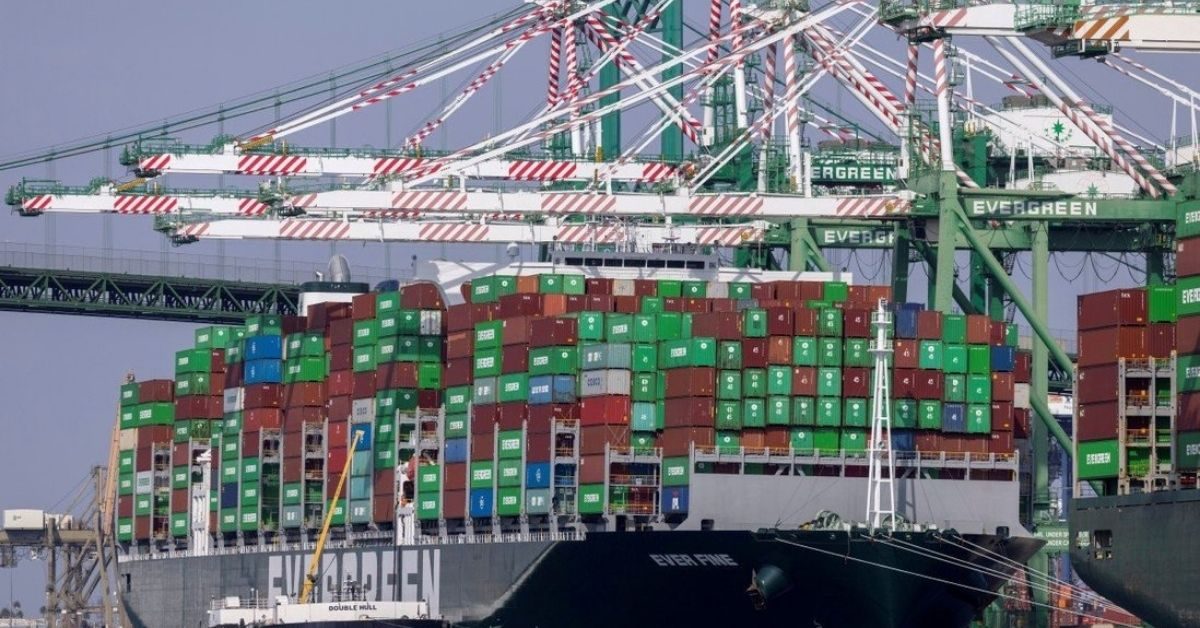The cost of shipping between China and the United States has fallen after months of steep increases, as orders for year-end holidays slow and a power crunch in the world’s second biggest economy disrupts production of goods, new data shows.
Though prices are still far higher than this time last year, costs for shipping containers have fallen by more than 51 per cent on some routes between September and October, according to freight forwarding platform Shifl.
The spot rate for shipping a 40-foot container from China to Los Angeles has dropped from a high of US$17,500 last month to US$8,500, while rates to the east coast of the US have tumbled 28.2 per cent over the past month to US$14,000 per container.
“These rates could go even lower. We’re already seeing long-term rates for shipping 40-foot containers from China to the US go below US$5,000,” said Shabsie Levy, founder and CEO of Shifl.
The Freightos Baltic Index also showed shipping costs between Asia and both coasts of the US dropped 16 per cent last week, marking the first significant dip since August, though this week transpacific ocean rates remained largely unchanged.
Surging prices for containers and congestion at ports around the world has driven shipping rates sky high over the past year, causing major headaches for Chinese exporters, who are also struggling with high raw material prices. Many smaller producers of low-value goods have started cutting back on production and turning away orders to preserve their margins.
Despite falling shipping rates, transpacific freight costs are still about four times higher than the same period last year, and more than 10 times higher than pre-pandemic levels, said Judah Levine, head of research at Freightos.
“Before the pandemic, our customers were getting containers shipped for around US$1,500,” said Levy.
Uneven distribution of containers at major ports around the world due to pandemic-related lockdowns and port suspensions are behind the elevated costs. Since the middle of last year, most shipping containers sent from Asia to North America and Europe have not been returned because of logistics disruptions and a lack of goods to stock them.
The problem has been exacerbated by speculators who “ took advantage of the price increases and congestion by buying up capacity” and are now looking to offload containers to book a healthy profit, said Levy.
But a reprieve has come in the form of China’s power crisis, which has caused output to fall among many small and medium-sized manufacturers.
“For shippers with inventory still in China, access to capacity at lower rates is great news. But the big question now is whether there will be products to fill these containers,” Levy said.
Disruptions to global logistics networks are tipped to extend into next year, especially as shipments play catch up once China’s electricity crunch is under control.
Karen Li, head of Asia infrastructure & industrial research at JP Morgan, said easing spot rates do not yet indicate prices are on a permanent downward trend, but reflect factory closures in China during recent national holidays.
“We see a likelihood that [fourth quarter] spot rates will not see significant corrections, as underlying demand fundamentals remain strong, with market expectations for shipments to pick up again from the end of October,” she said in a note on Tuesday.
Traders may also experience more headwinds with freight costs if shipping carriers increase fuel surcharges at the end of the month amid an oil price surge, Levine said.
Source : China Macro Economy








